Are you tired of dealing with hair loss and thinning? Toronto Cosmetic Surgery Institute and Nova Medical Hair Transplant have partnered to offer you the latest and most advanced hair transplant solutions in Toronto. Our team of experts uses cutting-edge technology and techniques to help you regain your confidence and achieve a full head of hair.
At the Toronto Cosmetic Surgery Institute, we understand the importance of a full, healthy head of hair in boosting self-confidence and maintaining a youthful appearance. Our partnership combines the expertise of Toronto Cosmetic Surgery Institute in aesthetic surgery with the advanced hair transplant solutions offered by Nova Medical Hair Transplant. We provide two state-of-the-art hair restoration treatments designed to deliver exceptional, natural-looking results:
Follicular Unit Extraction (FUE)
FUE is a minimally invasive hair transplant procedure that involves extracting individual hair follicles from the donor area and carefully transplanting them to the recipient area. Our team uses the latest technology to ensure precise, seamless grafts that blend seamlessly with your existing hair. The FUE procedure provides numerous benefits, including:
Platelet-Rich Plasma (PRP) Therapy
PRP therapy harnesses the power of your body’s natural growth factors to stimulate hair growth and improve hair thickness. By drawing a small blood sample and concentrating the platelets, we create a powerful solution that, when injected into the scalp, promotes hair follicle regeneration and overall hair health. Benefits of PRP therapy include:

No one-size-fits all solution.
Every transformation is customized to meet each patient’s unique needs

Our doctors are renowned worldwide as innovators in the field of aesthetic plastic surgery.

Technicians with over 15 years of experience in the hair transplant industry.
Patient quality is at the forefront of our practice.

Among the few global leaders in hair transplant technology offering our clients the NEOGRAFT advanced hair transplant experience.

Providing financing by our trusted 3rd party providers.


The selection for donor follicles is randomized and will not leave a tell-tale grid pattern or other, obvious scarring.

Help preserve and protect hair grafts during the whole process.

Technicians with over 15 years of experience in the hair transplant industry. Patient quality is at the forefront of our practice.

Allows for tiny, micro-punch hair follicle units which can contain as few as 1-2 hairs. These tiny graft donor sites measure less than 1 mm and heal to be nearly invisible.

The most painless hair transplant system yet which, along with topical numbing agents and anesthetic, allow for a fast, comfortable procedure and minimal downtime.

The successful take rate for viable, thriving hairs with the FUE advanced systems is at least 90%. For most cases, one rapid 5-6-hour treatment is sufficient to restore your hair dramatically and permanently.
The FUE process is an advanced next-generation hair transplant micro-surgery. Click on the steps to get a simplified overview. For more details particular to your case, please consult with our doctor.
View Gallery
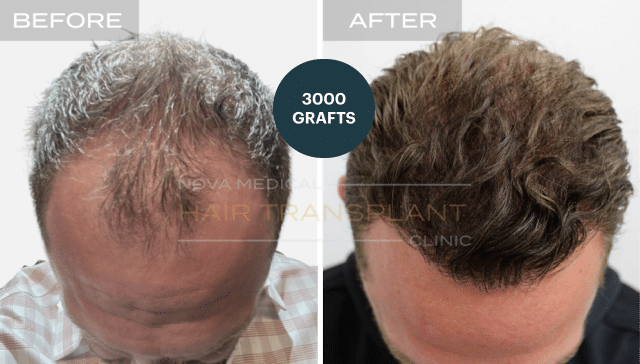
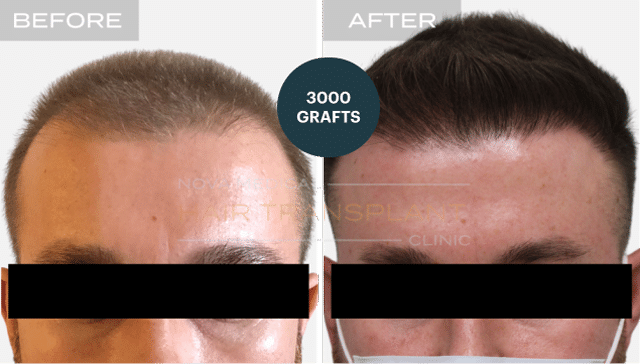
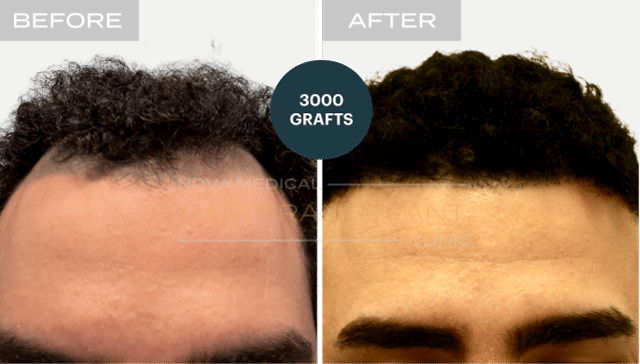
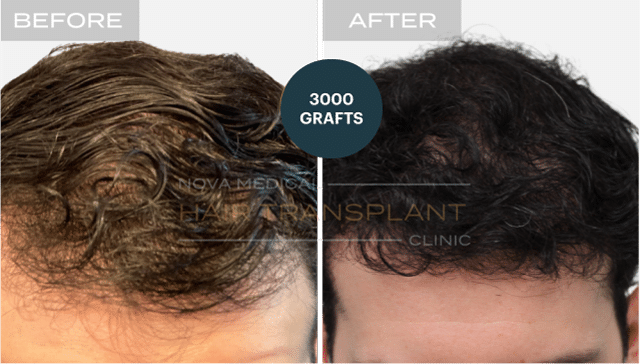
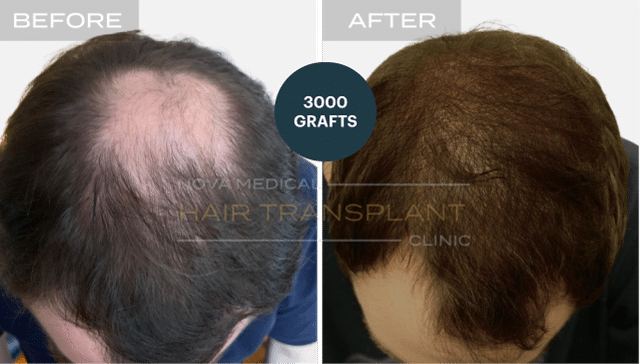
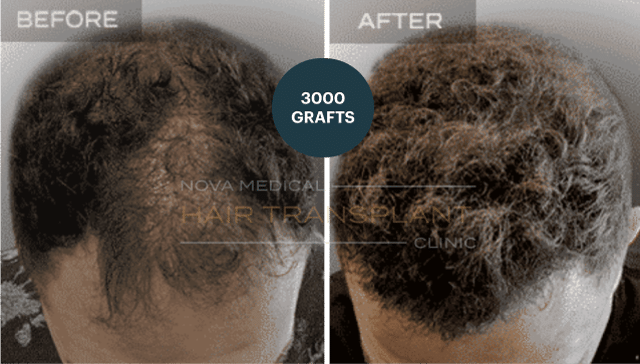
There is typically no specific age requirement for hair transplants. The suitability for a hair transplant procedure is determined on an individual basis, considering various factors such as the extent of hair loss, the stability of the donor area (the area from which hair follicles are extracted), and the overall health of the patient.
Hair transplant procedures are commonly performed on individuals who have experienced pattern baldness, also known as androgenetic alopecia. This type of hair loss tends to progress with age, so many people seek hair transplants in their 30s, 40s, or beyond. However, the procedure can also be performed on younger individuals who have experienced significant hair loss due to factors such as trauma, scarring, or certain medical conditions.
It’s important to consult with a qualified hair transplant specialist or a dermatologist experienced in hair restoration to assess your specific situation and determine if you are a suitable candidate for a hair transplant, regardless of your age. They will evaluate factors such as the stability of your donor area and the progression of your hair loss to provide personalized recommendations and discuss potential treatment options.
If you are experiencing stable hair loss or thinning and have an adequate supply of donor hair, you may be an ideal candidate for a hair transplant. Our team of hair transplant specialists at Nova Medical can provide a consultation to assess your suitability for the procedure.
Do not be concerned by outdated hair plug results from the past. Modern Follicular Unit Excision (FUE) techniques have greatly advanced, delivering natural-looking results with minimal scarring. Unlike the strip transplant method that required a long incision at the back of the head, today’s dominant FUE methods significantly reduce visible scars.
One such advanced FUE system is the ARTAS® precision system, which can extract micro units and place them in shallow slits to avoid the unnatural appearance of hair plugs. Your surgeon’s expertise is crucial in ensuring that the implanted hairs follow the natural direction and angles of your hair, mimicking authentic growth. This meticulous placement of each graft will yield remarkable, long-term results.
After a hair transplant, it is common for the transplanted hair to shed within a few weeks. This shedding is a normal part of the hair growth cycle and should not be a cause for concern. The transplanted hair follicles enter a resting phase, and new hair growth will typically begin within a few months.
It’s important to note that not all of the transplanted hairs will shed. Some hair follicles will remain in the scalp and continue to grow new hair. The shedding and subsequent regrowth of the transplanted hair is a temporary phase, and the new hair that grows will be permanent.
The timeline for new hair growth can vary from person to person, but typically, visible improvement is seen within three to six months after the procedure. It may take up to a year for the full results of the hair transplant to become apparent.
It’s crucial to follow the post-operative care instructions provided by your surgeon to ensure optimal healing and hair growth. If you have any concerns about the progress of your hair transplant or the shedding process, it’s best to consult with your hair transplant specialist or surgeon for personalized guidance and reassurance.
Yes, there are non-surgical solutions available for hair loss that can help improve the appearance of your hair. Here are a few common options:
Medications: FDA-approved medications such as minoxidil (Rogaine) and finasteride (Propecia) can be used to slow down hair loss and promote hair regrowth. These medications are available in topical or oral forms and can be used as part of a long-term treatment plan.
Low-level laser therapy (LLLT): This non-invasive treatment involves using specialized devices such as laser combs or caps that emit low-level laser light onto the scalp. It is believed to stimulate hair follicles and promote hair growth.
Scalp micropigmentation (SMP): SMP is a technique where pigments are tattooed onto the scalp to create the appearance of a closely shaved head or to add density to thinning areas. It can be a suitable option for individuals with extensive hair loss or those who prefer a shaved or buzzed hairstyle.
Hair fiber powders and concealers: These are cosmetic products made of tiny fibers that cling to existing hair, making it appear thicker and fuller. They can be sprinkled onto the scalp to camouflage areas of thinning or baldness.
Hair systems and wigs: Custom-made hair systems or wigs can provide a non-surgical solution for hair loss. These are designed to match your natural hair color, texture, and style, offering a realistic and immediate improvement in appearance.
It’s important to note that while these non-surgical solutions can help address the cosmetic concerns of hair loss, they may not treat the underlying cause. Consulting with a dermatologist or hair loss specialist can help determine the most suitable non-surgical options for your specific condition and desired outcome.
Hair transplant recovery is typically well-tolerated by most individuals, and any discomfort experienced is generally manageable. The level of pain or discomfort can vary depending on several factors, including the individual’s pain threshold, the extent of the procedure, and the specific techniques used.
During the hair transplant procedure itself, local anesthesia is administered to numb the scalp, so you should not feel any pain or discomfort during the surgery. However, you may experience some mild sensations such as pressure, tugging, or minor discomfort.
After the procedure, it is common to have some post-operative discomfort, which can include soreness, tightness, or a mild throbbing sensation in the donor and recipient areas of the scalp. Your surgeon may prescribe pain medication or recommend over-the-counter pain relievers to manage any discomfort.
Additionally, you might experience some swelling, itching, or redness in the treated areas, but these are typically temporary and subside within a few days to a couple of weeks.
Following proper post-operative care instructions, such as gentle washing, avoiding strenuous activities, and protecting the scalp from direct sunlight, can help minimize any potential discomfort and promote a smoother recovery process.
It’s important to discuss any concerns about pain or discomfort with your hair transplant specialist or surgeon before the procedure. They can provide you with detailed information about what to expect during the recovery period and offer strategies to help manage any discomfort effectively.
The duration of a hair transplant procedure can vary depending on several factors, including the extent of hair loss, the transplantation technique used, and the number of grafts being transplanted. In general, hair transplant procedures can take several hours to complete.
For smaller procedures or when a specific area of the scalp is being targeted, the procedure may take around 4 to 6 hours. This typically involves extracting donor hair follicles, preparing them for transplantation, and then implanting them into the recipient areas.
For larger or more complex cases, such as full head coverage or multiple sessions, the procedure may extend to a full day or even multiple consecutive days. These longer procedures may involve multiple stages of harvesting and implantation to achieve the desired result.
It’s important to note that during the procedure, breaks may be provided to ensure your comfort and well-being. These breaks allow you to stretch, rest, and have any necessary nourishment or hydration.
The specific timeline and duration of your procedure will be discussed and planned during your consultation with the hair transplant specialist or surgeon. They will evaluate your unique situation, the number of grafts required, and the appropriate technique to determine an estimated duration for your procedure.
Remember that hair transplant procedures require precision and attention to detail, so it’s essential not to rush the process to achieve the best possible outcome.
The pricing for a hair transplant varies based on the specific procedure and the number of hair follicles involved. For detailed information on the costs, we invite you to visit our dedicated costs page to find out more!
The number of treatments needed to achieve the desired results varies for each patient and is influenced by factors such as the extent of hair loss and individual goals. Our team of hair restoration specialists will collaborate with each patient to create a personalized treatment plan that takes into account their specific needs. This plan will help determine the number of treatments required to achieve the desired outcome.
Hair transplants are not exclusively limited to men; women can also benefit from this procedure. Hair transplant surgery is an effective solution for women who are facing hair loss or thinning.
The pricing of a hair transplant is determined by factors such as the degree of hair loss and the specific procedure involved. Hair transplant procedures are typically not covered by insurance; however, our clinic provides financing options to assist in making the treatment more affordable and accessible for you.
Start your hair restoration journey with Dr. 6ix and Nova Medical Hair Transplant by filling out this form and receive a personalized quote for your case. Our team will assess your hair loss and recommend the most appropriate treatment plan to help you achieve the full, healthy hair you deserve. Take the first step toward restoring your confidence and reclaiming your youthful appearance!
Toronto Cosmetic Surgery Institute is a state of art outpatient surgery centre located inside the prestigious Hotel in Downtown Toronto.

100 Front St West,
Toronto, ON, M5J 1E3